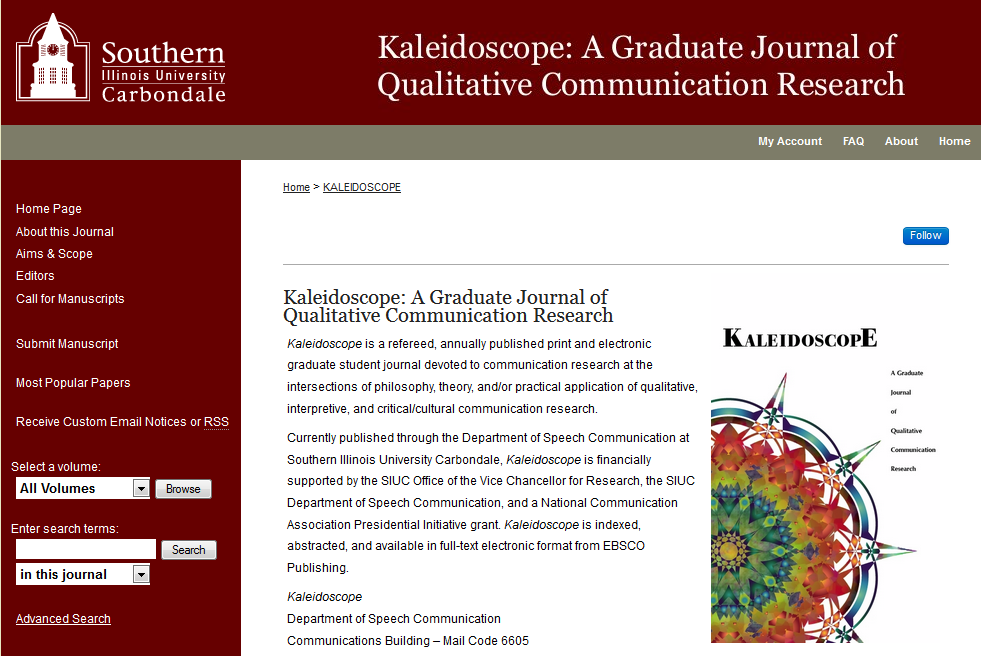For editors of Kaleidoscope: A Graduate Journal of Qualitative Communication Research, published at Southern Illinois University Carbondale’s OpenSIUC Repository, showing off impact and readership is more important than ever. The journal’s print edition is partially funded through a Communication Association Presidential Initiative grant, and metrics for the online, open-access digital edition help prove the value of the journal with hard numbers.
C. Kyle Rudick, Kaleidoscope’s editor-in-chief, knows it’s crucial to cite reliable—and impressive—statistics to financial supporters on campus, and publishing through Digital Commons has helped him do just that. The journal boasts 6,000 unique readers, and its articles have been downloaded 23,000 times. Kaleidoscope’s editors can also show off the journal’s high profile on Google searches and the attention it gets on popular media sites like Tumblr. As Rudick puts it, metrics like these show that “This isn’t just graduate students playing around with a journal; this is serious scholarship, and people are looking at it.”
Since Kaleidoscope can’t afford a lot of self-promotion, its online presence has been vital in attracting attention, leading to more reviewers, more submissions, and a higher rejection rate—all trademarks of a successful journal. What’s Kaleidoscope doing with the money it’s saving on marketing? For one, they’re attending events like the recent National Communication Association conference, where Rudick ran into a number of Kaleidoscope alumni, many of whom had their first scholarly articles published in the journal, and are now established professors in the Communication Studies field. Some have even expressed interest in giving back to Kaleidoscope as members of the editorial board—may the legacy live on!

A screenshot of Kaleidoscope’s homepage.






